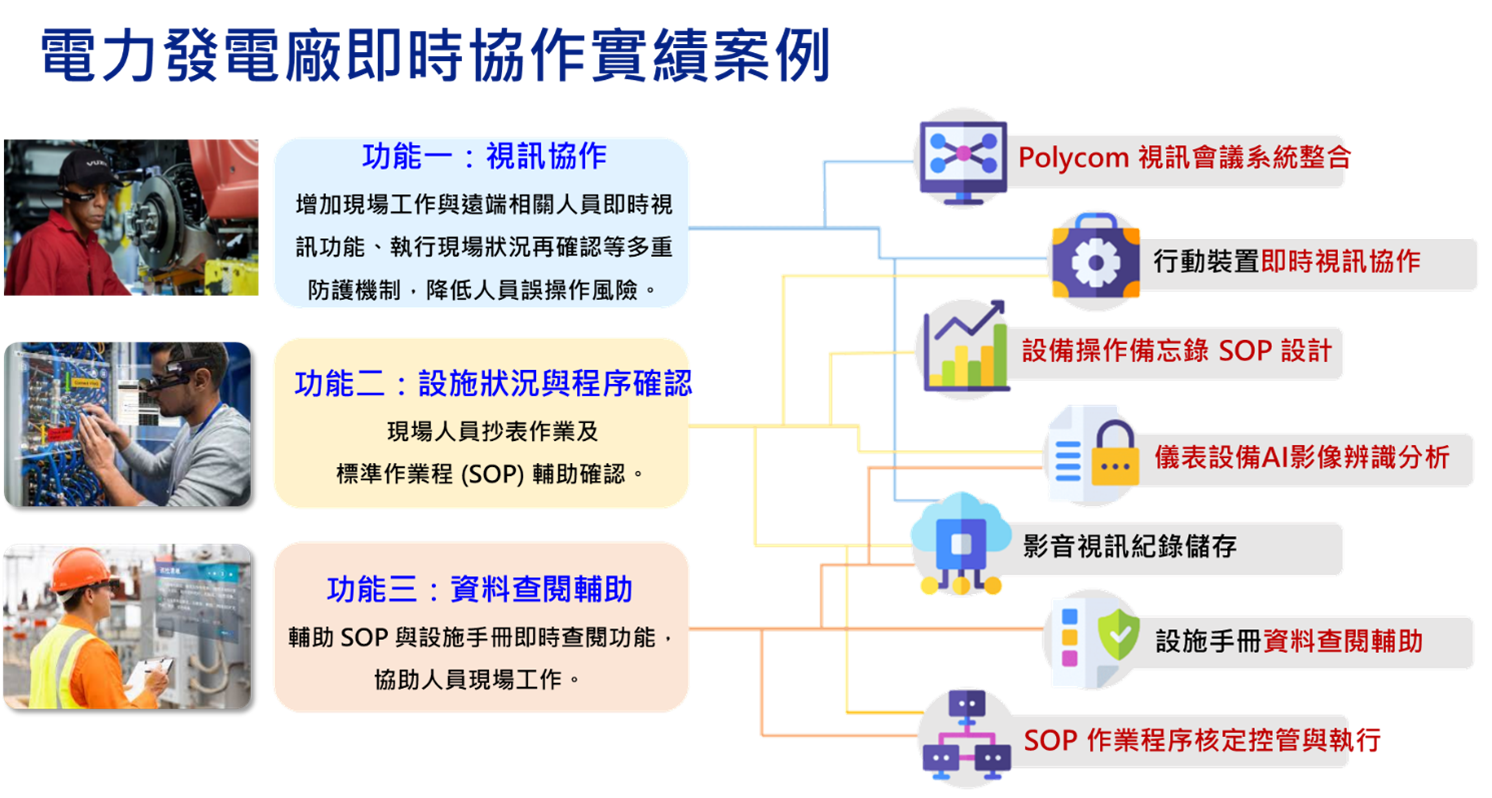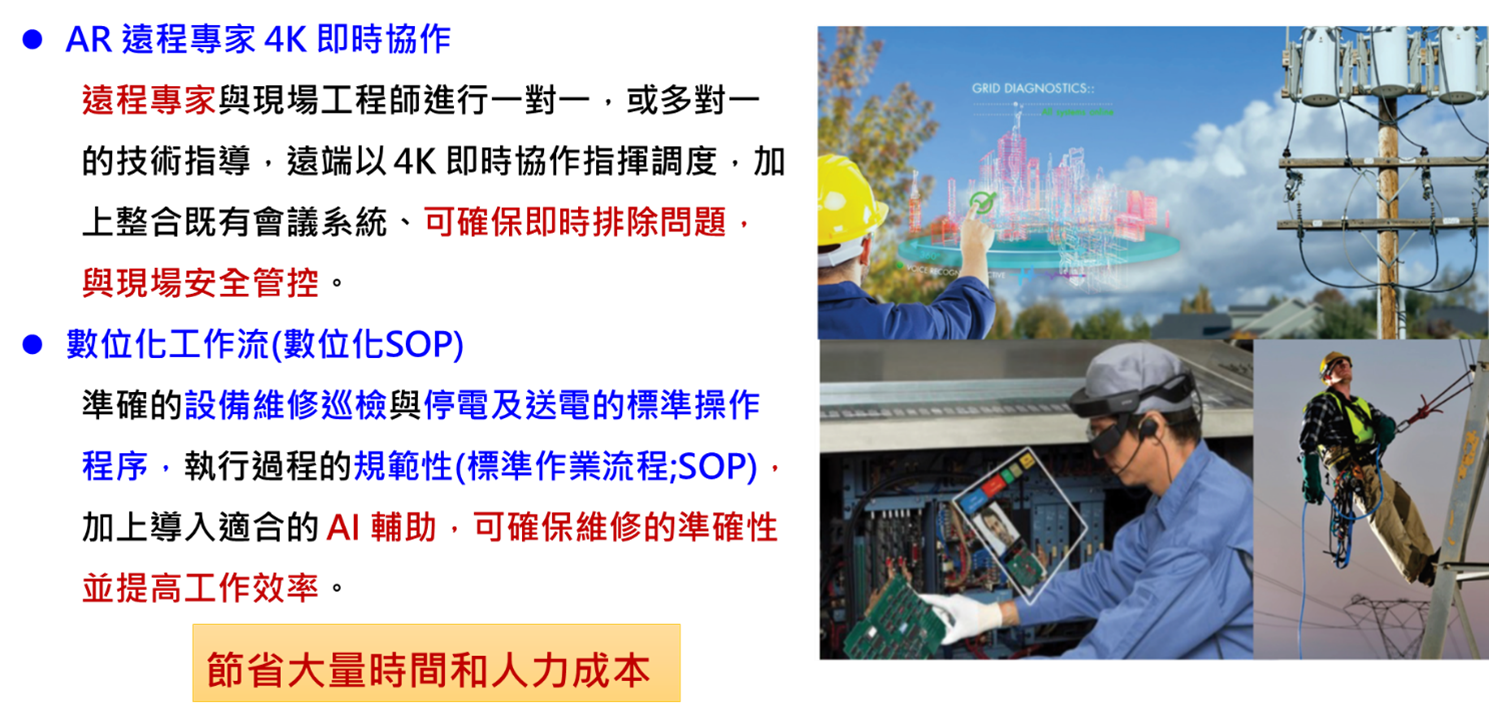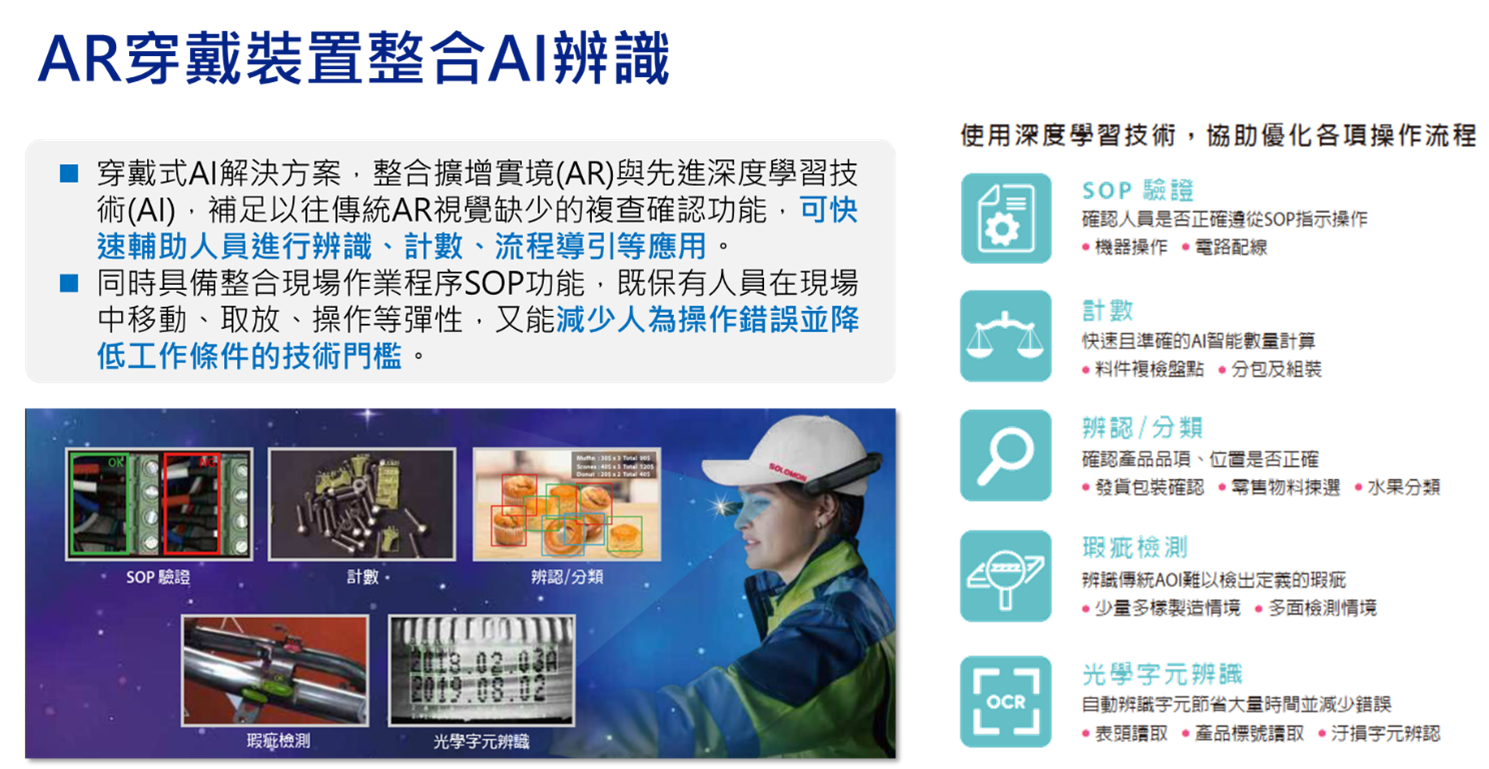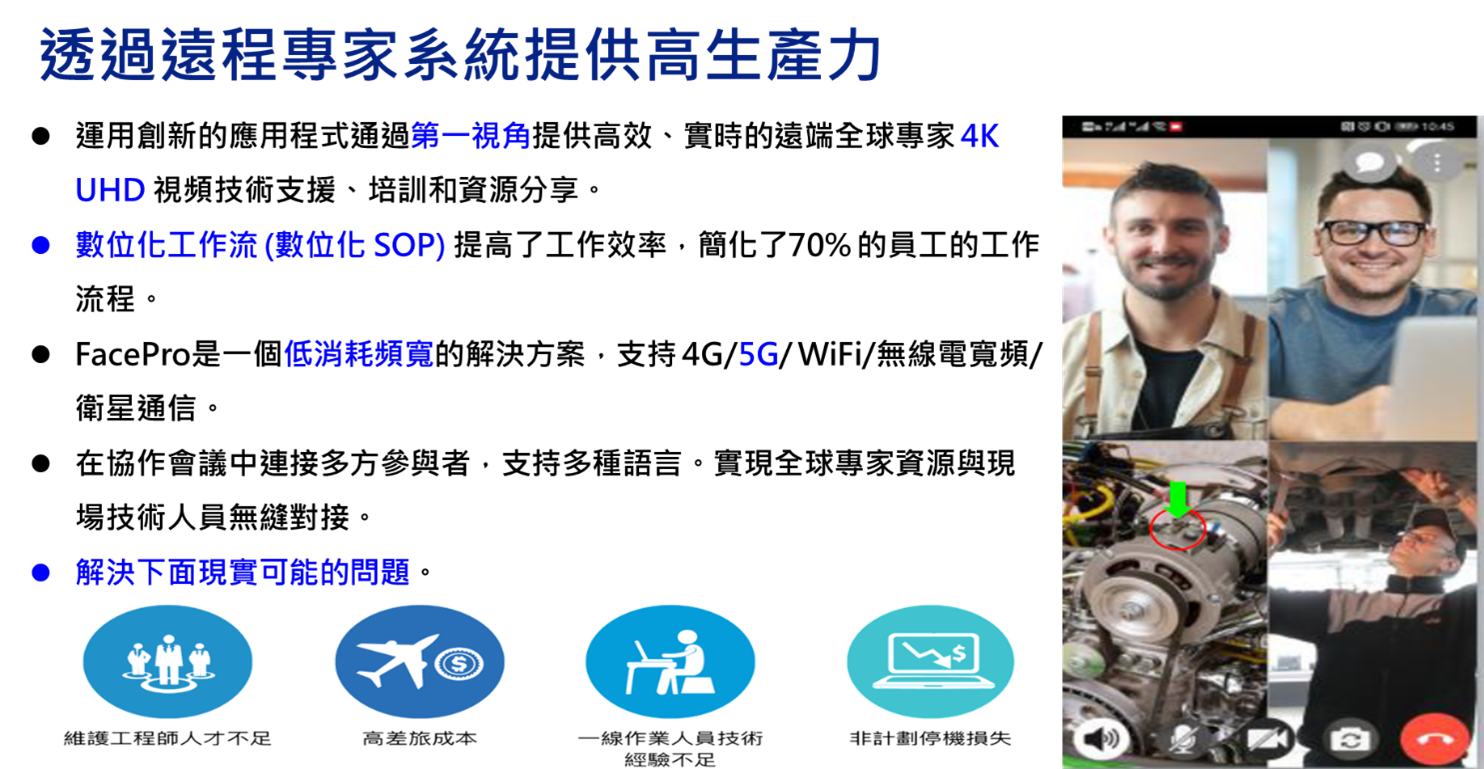Smart Applications
Intelligent Transportation Service | Smart City Control Solutions | AIoT innovative application services assist digital transformation | Smart Pole Solution | AR remote video collaboration application | Drone application solutions - unmanned aerial vehicles / drones | VSV Cloud (Video Surveillance Cloud) | Technological disaster prevention and smart construction solutions | Intelligent Building Management System solutions
AR remote video collaboration application
Brief Introduction
Augmented Reality
Augmented Reality (AR) is a technology that overlays virtual objects and information onto the real world through electronic devices such as smartphones, smart glasses, and tablets. It is an emerging commercial application and an innovative way to present textual and graphical content. This solution integrates AR wearable devices with AI recognition technology to provide intelligent, integrated service applications in smart manufacturing and industrial sectors.
Descriptions of Features and Advantages
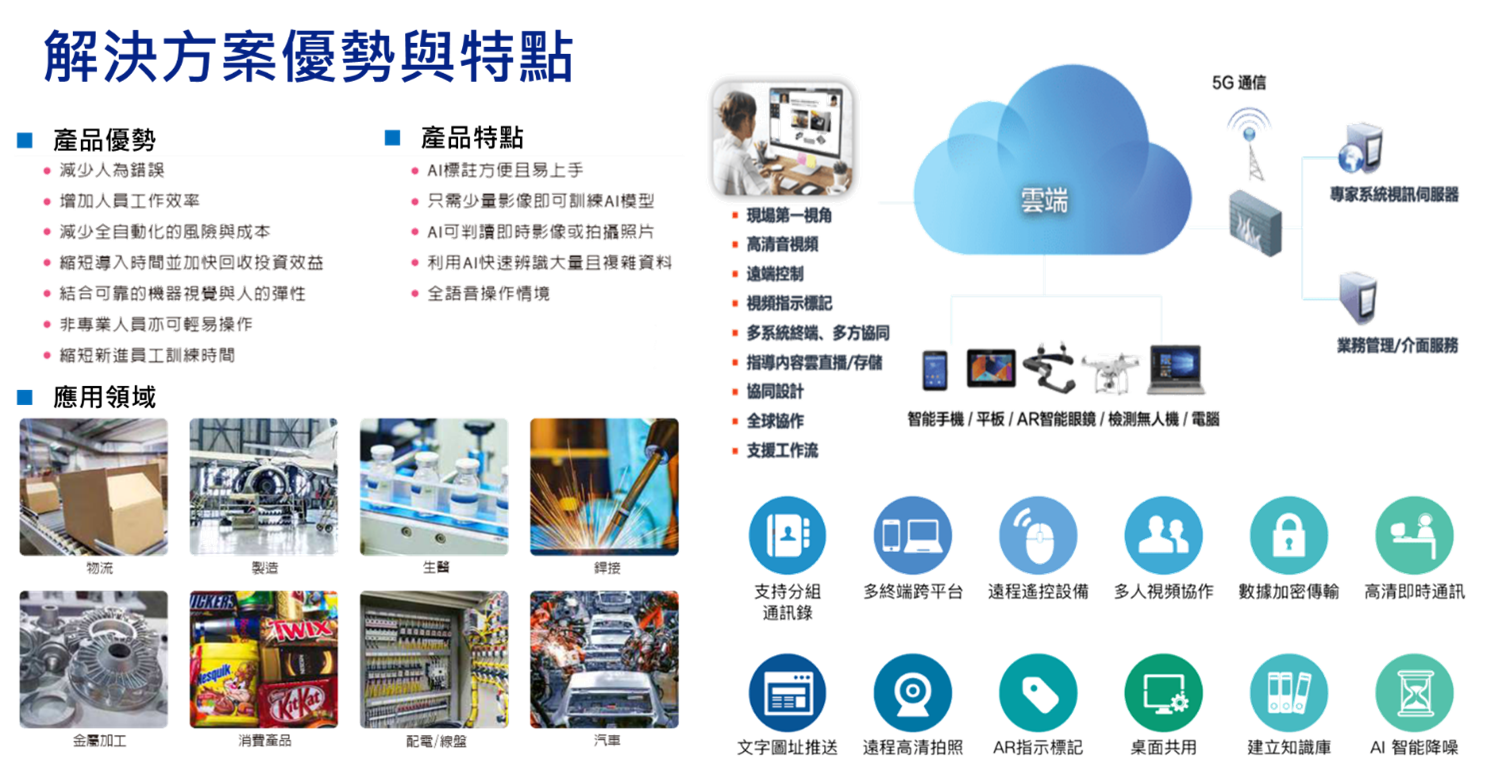
AR Augmented Applications
By integrating information from industrial IoT or factory equipment and displaying it through smart glasses or headsets in the form of animations or 3D elements, AR enhances efficiency and speed in maintenance tasks. Regardless of experience level, employees can be empowered to service a wider range of machinery, helping businesses overcome talent shortages while significantly improving the flexibility of operations and maintenance teams.
.png)
Benefits
Remote Application Features
- Effective Handling: Assists operational teams in real-time identification of on-site conditions and inspection of critical equipment processes.
- Efficient Resource Utilization: Reduces service downtime, ensures continuous operation of key equipment, and helps optimize workforce scheduling and deployment.
- Seamless Communication: Provides real-time, accurate information to frontline workers and backend decision-makers.

Applications
Application Scenarios in Manufacturing and Industrial Sectors Requiring AR Remote Video Collaboration Solutions.
AR remote collaboration can be applied in various industrial scenarios where enhanced visualization, real-time support, and improved operational efficiency are needed.
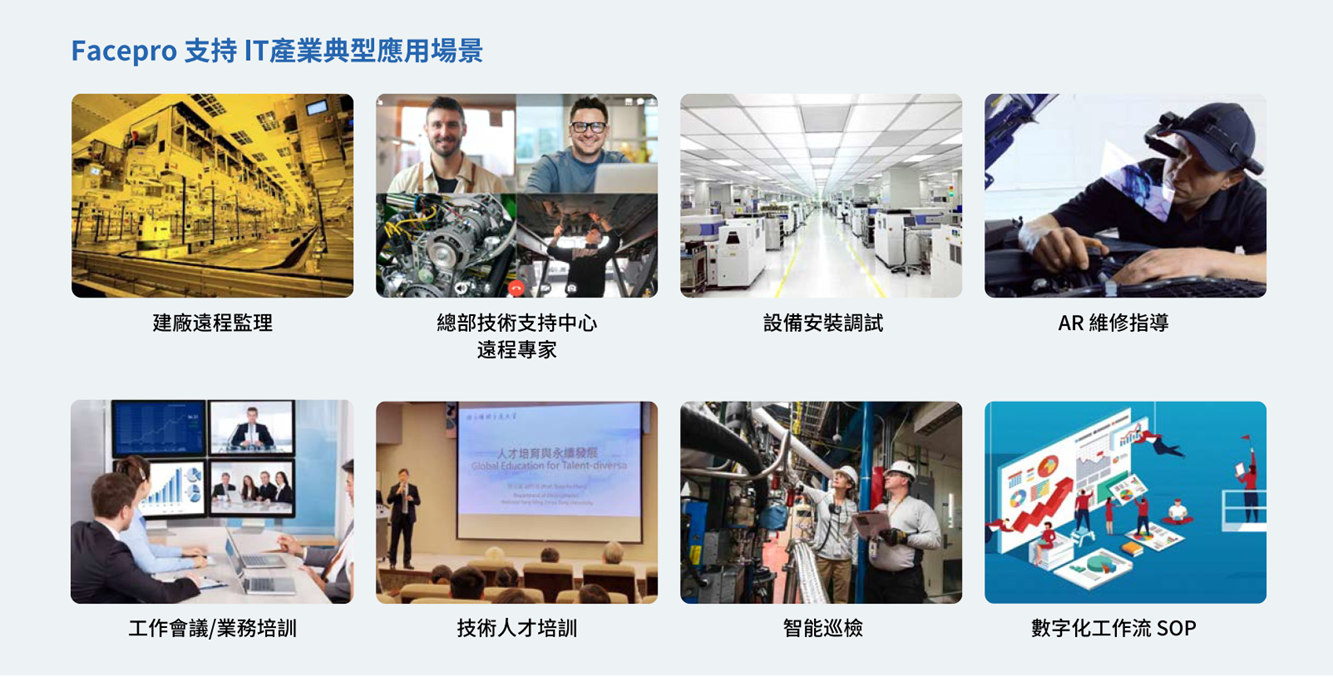
Tools
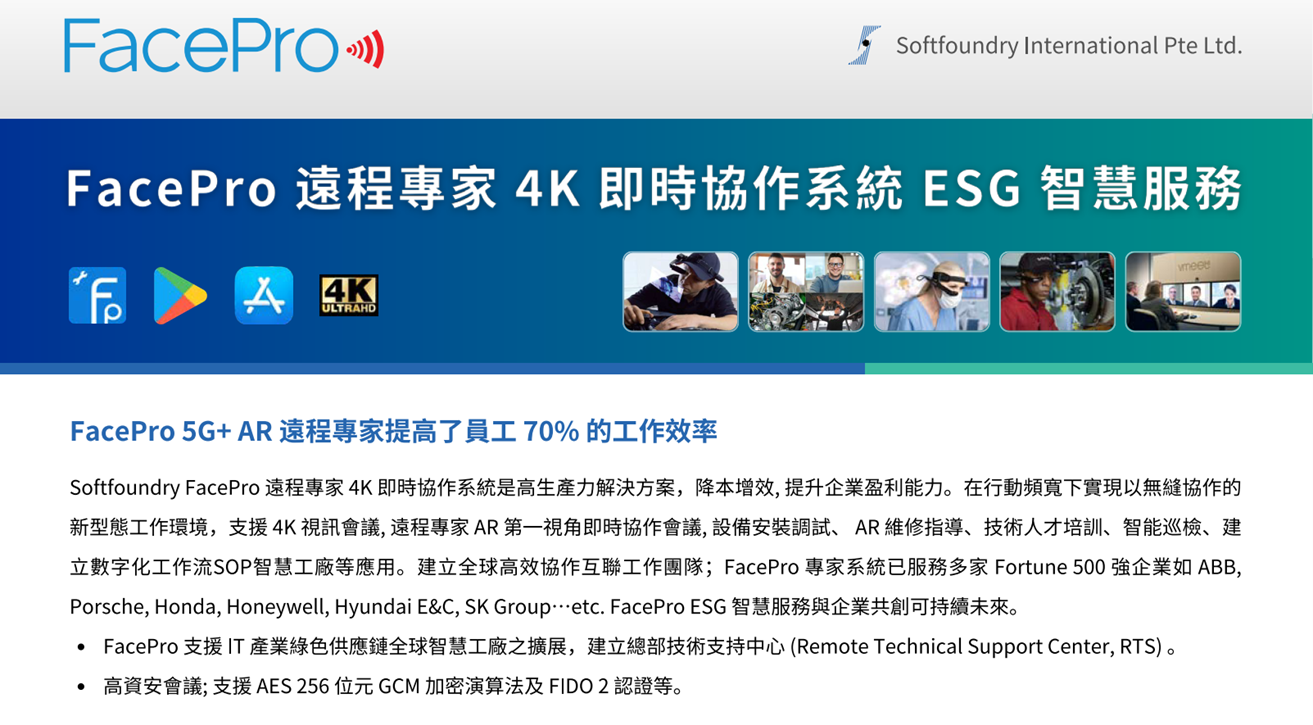
Contact Window
Success Cases
